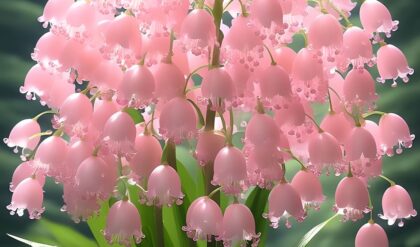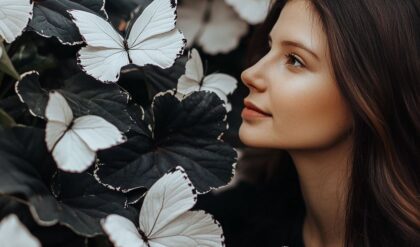Exotic flowers possess an undeniable charm that transcends mere aesthetics; they are vibrant symbols of varied cultures, climates, and ecosystems. Each exotic bloom tells a story steeped in tradition—whether it’s the serene grace of the lotus, revered in many Eastern philosophies, or the flamboyant spectacle of the Bird of Paradise, celebrated for its resemblance to a tropical bird in flight. Such blooms remind us that beauty is incredibly diverse and can flourish even in the most unlikely environments. Take, for instance, the anthurium or proteas, both of which not only serve as showpieces in floral arrangements but also play crucial roles in the local ecology by attracting specific pollinators. Growing these plants invites a connection between humanity and nature, suggesting a symbiotic relationship where the cultivation of beauty enriches both our lives and the environments from which these flowers hail.

Definition and Characteristics
Exotic flowers are generally described as those that originate from tropical or subtropical regions, often exhibiting bold colors, unusual shapes, and adaptations to thrive in diverse climates. These blooms are typically not native to temperate regions and may be less familiar to people living outside their regions of origin. What sets exotic flowers apart is their ability to captivate the senses and transport us to faraway lands, evoking a sense of wonder and intrigue.
One remarkable characteristic of exotic flowers is their remarkable adaptability. Many species have evolved to thrive in challenging environments, such as the high-altitude Himalayan mountains or the dense rainforests of the Amazon. This resilience is a testament to the incredible diversity of life on our planet and the ingenious ways in which plants have adapted to their surroundings.
Moreover, exotic flowers often boast vibrant hues and intricate shapes that challenge our traditional notions of floral beauty. From the bold, sculptural forms of the Calla Lily to the delicate, intricate patterns of rare orchids, these blooms push the boundaries of what we consider aesthetically pleasing. This unique visual appeal has made exotic flowers highly sought-after in the world of floral design, inspiring artists and enthusiasts alike to find new ways to showcase their beauty.

Historical Context of Exotic Floriculture
The cultivation and trade of exotic flowers have a long and fascinating history, tracing back to the ancient civilizations of Asia, Africa, and the Americas. As global exploration and trade networks expanded, so too did the exchange of floral species between distant regions, sparking a growing fascination with the world’s botanical diversity.
One of the earliest examples of this exchange can be found in the ancient Egyptian civilization, where the lotus flower was revered for its symbolic significance and incorporated into various religious and cultural practices. Similarly, the Aztec and Inca empires in the Americas were renowned for their intricate gardens, which featured a wealth of exotic blooms like the Bromeliad and the Anthurium.
As European colonization spread across the globe, the desire to acquire and cultivate exotic flowers intensified. Wealthy individuals and institutions established conservatories and botanical gardens to showcase their collections, fueling a growing appreciation for the botanical wonders of the world. This era also saw the development of specialized nurseries and the rise of the global flower trade, which continues to this day.
Today, the cultivation and appreciation of exotic flowers have become a truly global phenomenon, with enthusiasts and professionals alike seeking out the rarest and most captivating species from around the world. From the vibrant Hibiscus of Hawaii to the enigmatic Orchids of Southeast Asia, the allure of exotic flowers continues to captivate and inspire people across cultures and generations.
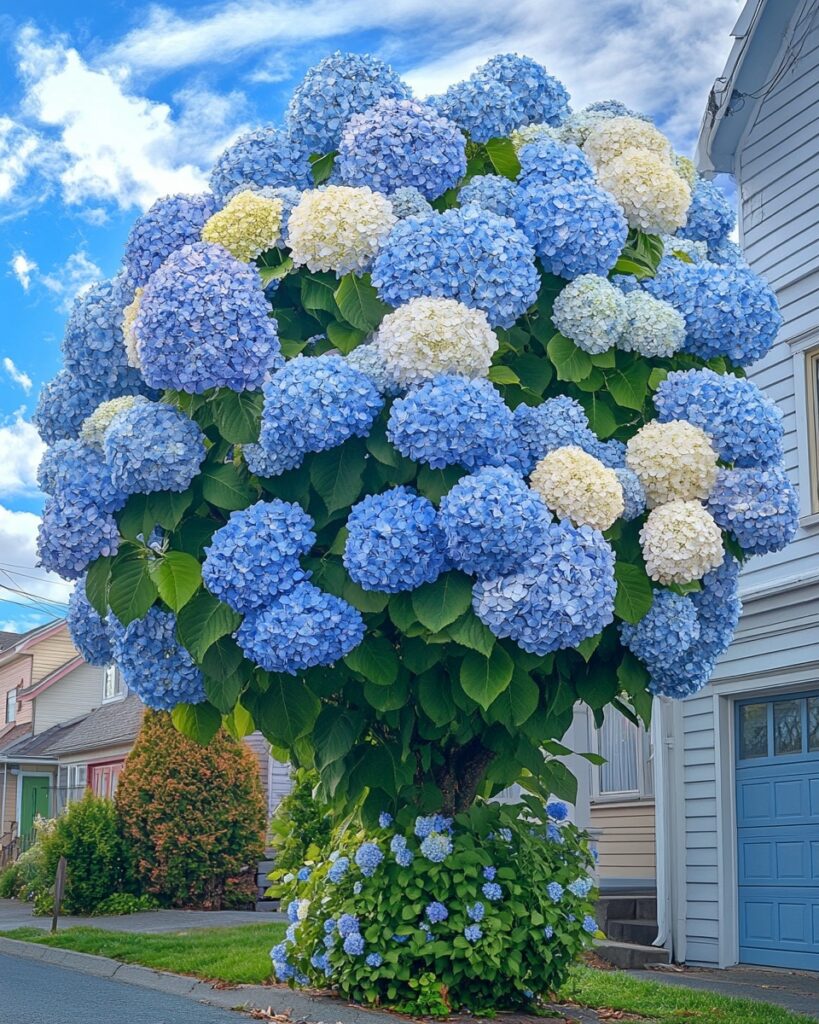
Symbolism in Different Cultures
Exotic flowers often hold deep cultural significance, serving as symbols of identity, spirituality, and the human connection to the natural world. Across various regions and civilizations, these blooms have been imbued with profound meaning, shaping traditions, beliefs, and artistic expression.
In many Eastern philosophies, the lotus flower is revered for its ability to rise from the muddy waters, symbolizing the human journey from ignorance to enlightenment. The serene beauty of the lotus has made it a recurring motif in religious art, architecture, and literature, representing purity, spiritual awakening, and the triumph of the spirit over the material world.
Conversely, in Hawaii, the Hibiscus flower is closely associated with the island’s vibrant culture and hospitality. The bloom is often used in ceremonial leis and adorns the hair of local residents, conveying a sense of warmth, community, and connection to the land.
Shifting our gaze to South America, the Bromeliad family, which includes the iconic Pineapple, holds great significance in Aztec and Inca civilizations. These plants were not only valued for their edible fruits but also incorporated into religious rituals and symbolic art, reflecting the deep reverence these cultures held for the natural world.
As we explore the diverse cultural meanings attributed to exotic flowers, we begin to uncover the intricate tapestry of human-nature relationships that have evolved across the globe. These symbolic connections serve as a reminder of the profound ways in which we have intertwined our destinies with the floral kingdom, creating a shared understanding and appreciation for the cycles of life.
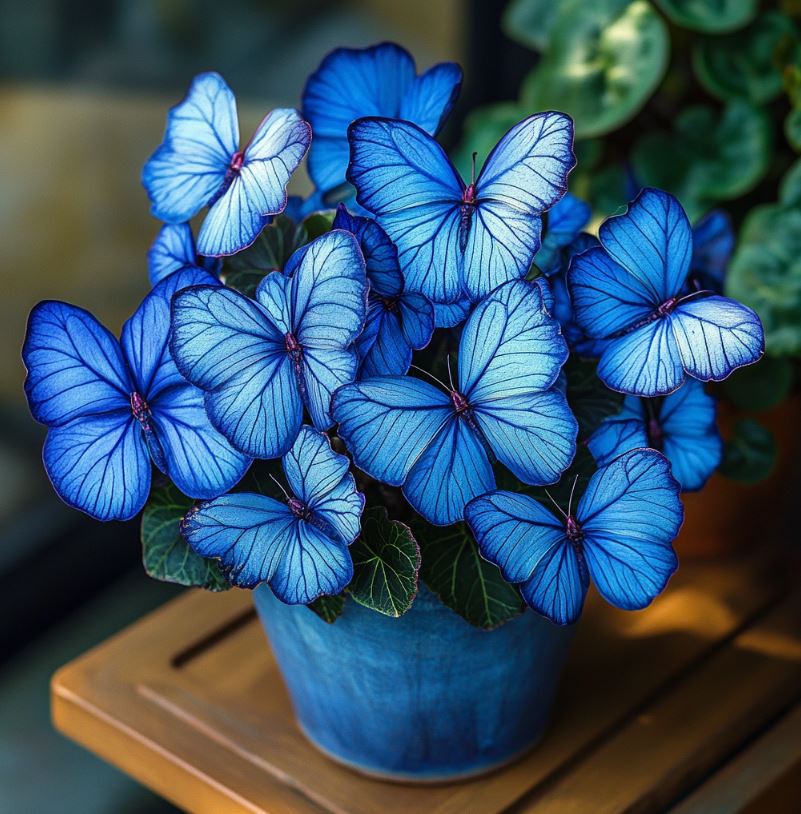
Flowers in Traditional Ceremonies
Exotic flowers have long held a prominent place in traditional ceremonies and rituals, serving as centerpieces for celebrations, memorials, and sacred rites. The use of these vibrant blooms in cultural practices reflects their deep-rooted significance and the ways in which they have become interwoven with the fabric of human civilization.
In many Asian cultures, the lotus flower is a revered symbol, often featured prominently in Buddhist and Hindu ceremonies. The serene, floating lotus is believed to represent the purity of the soul, and its inclusion in rituals, such as the offering of lotus-shaped offerings, is meant to invoke a sense of spiritual enlightenment and inner peace.
Elsewhere, the Hibiscus flower is integral to the traditional Hawaiian Lei ceremony, where the blooms are woven into intricate garlands and presented as a symbol of welcome, respect, and affection. The act of donning a Hibiscus Lei is a cherished tradition that connects individuals to the island’s rich cultural heritage and the natural world that surrounds them.
Moving to South America, the Bromeliad family, which includes the vibrant Pineapple, holds great significance in the rituals and ceremonies of indigenous cultures. These plants were often used in ceremonial headdresses, woven into textiles, and incorporated into sacred spaces, reflecting their deep connection to the land and the cycles of life.
By exploring the use of exotic flowers in traditional ceremonies, we gain a deeper understanding of the ways in which these blooms have become interwoven with the fabric of human civilization. Their inclusion in sacred rites and celebrations speaks to the profound reverence and respect that many cultures have maintained for the natural world, and the power of floral symbolism to bridge the divide between the physical and the spiritual realms.
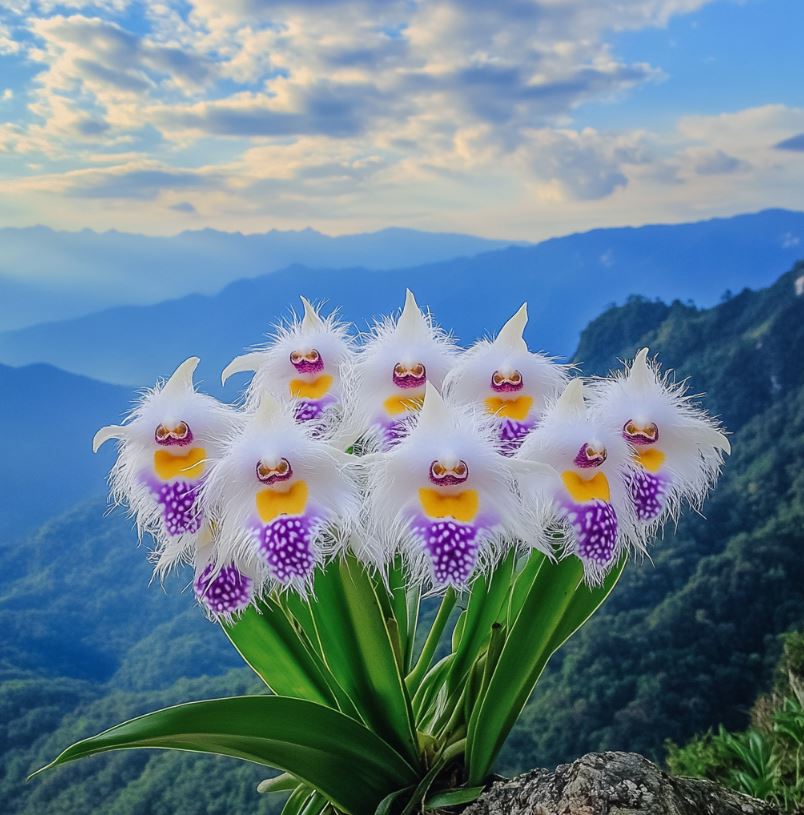
The Lotus: A Symbol of Serenity
The lotus flower, with its serene and graceful appearance, has long been revered as a symbol of spiritual enlightenment and purity in many Eastern philosophies and religions. Emerging from the murky depths of ponds and lakes, the lotus blossoms into a stunning, pristine flower, a metaphor for the human journey from ignorance to enlightenment.
In Buddhism, the lotus is a central motif, often depicted as the throne upon which the Buddha sits, or as a flower held in his hand. The lotus is believed to represent the purity of the body, speech, and mind, as well as the ability to rise above the material world and attain spiritual transcendence.
Similarly, in Hinduism, the lotus is associated with the divine, often depicted as the seat or vehicle of deities such as Lakshmi, the goddess of wealth and prosperity, and Saraswati, the goddess of knowledge and the arts. The lotus is seen as a symbol of the divine feminine, representing fertility, beauty, and the infinite potential of the human spirit.
The cultural significance of the lotus extends beyond the realm of religion and spirituality, finding expression in the arts, architecture, and literature of various Asian civilizations. The graceful, symmetrical form of the lotus has inspired artistic interpretations in the form of paintings, sculptures, and decorative motifs, while its serene beauty has been celebrated in poetry and literature.
In modern times, the lotus flower continues to captivate and inspire, serving as a reminder of the power of nature to transcend the physical realm and connect us to the deeper aspects of our existence. By cultivating an appreciation for the lotus and its symbolic meaning, we can foster a greater understanding of the diverse cultural and spiritual traditions that have shaped the human experience.
Bird of Paradise: Nature’s Artistry
The Bird of Paradise, with its striking plumage and unique shape, is a true marvel of nature’s artistry. This exotic flower, native to the tropical regions of South Africa, has captured the imagination of people around the world, inspiring awe and wonder with its flamboyant and bird-like appearance.
The Bird of Paradise, scientifically known as Strelitzia reginae, is named for its resemblance to a tropical bird in mid-flight. The plant’s vibrant orange and blue petals, which resemble a bird’s head and beak, extend outward from a tall, sturdy stem, creating a dramatic and visually captivating display.
Beyond its undeniable aesthetic appeal, the Bird of Paradise also holds great symbolic significance in various cultures. In South Africa, the flower is closely associated with the country’s rich biodiversity and is often used in cultural celebrations and ceremonies. The plant’s striking appearance has also made it a popular motif in art, fashion, and design, where it is celebrated as a symbol of the natural world’s incredible artistry.
Interestingly, the Bird of Paradise’s unique form is not merely a product of chance, but rather a result of millions of years of evolutionary adaptation. The flower’s distinctive shape and coloration have evolved to attract specific pollinators, such as the nectar-feeding birds found in its native habitat. This intricate relationship between the flower and its environment is a testament to the delicate balance that underpins the natural world.
As we admire the Bird of Paradise, we are reminded of the wonders that can be found in the natural world, and the incredible diversity of life that exists on our planet. This exotic flower encourages us to slow down, observe, and appreciate the artistry inherent in the natural world, and to consider our own place within the intricate web of life that sustains us all.
The Hibiscus: The Flower of Hospitality
In the vibrant island culture of Hawaii, the Hibiscus flower has become a beloved symbol of hospitality, warmth, and connection to the land. This exotic bloom, with its large, vibrant petals and delicate, tropical appearance, has become deeply intertwined with the island’s identity and traditions.
The Hibiscus, which thrives in the warm, humid climate of Hawaii, is a prominent feature of the island’s lush landscapes, adorning gardens, public spaces, and the hair of local residents. The flower’s vivid hues, ranging from deep reds and oranges to delicate pinks and whites, have become a visual representation of the island’s natural beauty and the welcoming spirit of its people.
Beyond its aesthetic appeal, the Hibiscus holds great cultural significance in Hawaii. The flower is often used in the creation of traditional leis, woven garlands that are presented as symbols of greeting, respect, and affection. The act of adorning someone with a Hibiscus lei is a cherished ritual that connects the recipient to the island’s rich heritage and the natural environment that surrounds them.
The Hibiscus has also become a fixture in various Hawaiian traditions and celebrations, from hula performances to wedding ceremonies. The flower’s bright, tropical appearance and its association with the island’s unique identity have made it a beloved and ubiquitous element of the Hawaiian cultural landscape.
As the Hibiscus continues to captivate both locals and visitors to Hawaii, it serves as a powerful reminder of the deep, symbiotic relationship that can exist between a people and the natural world that sustains them. The flower’s enduring presence in the island’s traditions and its role as a symbol of hospitality and warmth speak to the profound ways in which exotic blooms can become interwoven with the fabric of human civilization.
Bold Colors and Shapes
Exotic flowers are renowned for their bold, vibrant colors and unique, often architectural, shapes that defy traditional notions of floral beauty. These striking visual characteristics have made exotic blooms highly sought-after in the world of floral design and art, inspiring individuals to find new and creative ways to showcase their inherent majesty.
One prime example of the visual allure of exotic flowers is the Calla Lily, a statuesque bloom with a distinctive, sculptural shape. The Calla Lily’s large, cup-like petals and tall, graceful stem create a striking silhouette that has been widely celebrated in the world of art, from paintings to fashion and interior design. The flower’s bold, often white or vibrant hues further accentuate its architectural qualities, lending it a sense of elegance and sophistication.
Another iconic example of the visual splendor of exotic flowers is the rare and enigmatic Orchid. With their delicate, intricate patterns and a wide range of hues, Orchids have long captivated the human imagination, inspiring awe and wonder. The flower’s unique, bilateral symmetry and often asymmetrical arrangement of petals and sepals have made it a subject of fascination for artists and botanists alike, who seek to capture the intricacy and beauty of these remarkable blooms.
Beyond their aesthetic appeal, the bold colors and shapes of exotic flowers also serve as adaptations to their unique environments. The vibrant hues of many tropical flowers, for instance, have evolved to attract specific pollinators, such as hummingbirds or butterflies, which are crucial to the plant’s reproductive success. Similarly, the architectural forms of certain exotic blooms, like the Protea or the Bird of Paradise, have developed to maximize their exposure to sunlight and facilitate efficient seed dispersal.
As we explore the visual wonders of exotic flowers, we are reminded of the incredible diversity of life on our planet and the myriad ways in which plants have adapted to thrive in the most challenging environments. These captivating blooms inspire us to look beyond our preconceptions of floral beauty and to embrace the richness and complexity of the natural world.
Adaptability to Diverse Environments
Exotic flowers are renowned for their remarkable adaptability to a wide range of environments, from the lush tropical rainforests to the harsh, high-altitude regions of the Himalayas. This ability to thrive in diverse climates and ecosystems is a testament to the incredible resilience and ingenuity of these remarkable plants.
One prime example of exotic flower adaptability is the Anthurium, a vibrant bloom native to the tropical regions of the Americas. Thriving in the warm, humid conditions of the rainforest, the Anthurium has developed a unique set of features that allow it to flourish in this challenging environment. Its large, heart-shaped leaves, for instance, are designed to capture and funnel water, while its sturdy, waxy stems help the plant withstand the intense sunlight and heavy rainfall of the tropics.
Similarly, the Protea, a stunning and diverse genus of flowers found primarily in South Africa, has evolved to thrive in the region’s dry, nutrient-poor soil and seasonal wildfires. These hardy plants have developed deep, extensive root systems and specialized leaves that are designed to conserve water and minimize moisture loss, allowing them to survive even in the harshest of conditions.
In the high-altitude regions of the Himalayas, the Rhododendron, a genus of flowering shrubs, has adapted to the cold, harsh environment by developing thick, hairy leaves and compact growth habits that help them withstand the extreme temperatures and intense UV radiation of the mountain regions. These adaptations not only enable the Rhododendron to flourish in their native habitat but also lend the plant a unique and captivating visual appeal.
By exploring the adaptability of exotic flowers, we gain a deeper appreciation for the incredible resilience and diversity of the natural world. These remarkable plants serve as living reminders of the creative power of evolution and the incredible capacity of life to thrive in even the most challenging environments. In turn, understanding the unique adaptations of exotic flowers can inform our own approaches to sustainable gardening, ecosystem restoration, and the preservation of global biodiversity.
Attracting Pollinators
Exotic flowers play a crucial role in the delicate balance of local ecosystems, serving as vital providers of nectar and pollen that sustain a wide variety of pollinators, from hummingbirds to butterflies. The intricate relationships that have developed between these exotic blooms and their pollinators over millions of years of evolution are a testament to the interconnectedness of the natural world.
One prime example of this symbiotic relationship is the Protea, a genus of flowering plants native to South Africa. The Protea’s distinctive, cup-shaped flowers have evolved to attract the region’s unique pollinators, including the elusive and endangered Cape Sugarbird. These birds, with their long, slender beaks, are perfectly adapted to feed on the nectar of the Protea, ensuring the plant’s successful reproduction and the maintenance of the local ecosystem.
Similarly, the Anthurium, a vibrant bloom found in the tropical rainforests of Central and South America, has developed a close relationship with a variety of hummingbird species. The Anthurium’s bright, showy flowers and the abundant nectar they produce serve as a critical food source for these nectar-feeding birds, which in turn act as the plant’s primary pollinators. This relationship demonstrates a finely-tuned evolutionary dance where both species benefit—exotic flowers gain reproductive success while pollinators secure their sustenance.
The role of exotic flowers in attracting pollinators extends beyond mere aesthetics or functionality; it embodies the intricate web of life that sustains our ecosystems. Each bloom contributes to a vital cycle, ensuring not only its survival but also supporting biodiversity. For instance, orchids have specialized mechanisms designed to attract specific pollinators, like bees or moths, using scents and coloration that are irresistible to these creatures. As a result, these flowers become crucial players in maintaining population dynamics within their habitats, influencing everything from seed dispersal to the genetic diversity of flora and fauna alike.
Engaging with these interactions reminds us of the importance of preserving such ecosystems. Understanding the critical role that exotic flowers play in attracting pollinators accentuates the urgent need for sustainable practices in horticulture and agriculture. If we fail to protect these plants and their pollinators, we risk compromising an entire ecological balance that has taken millennia to evolve.
Supporting Biodiversity
Exotic flowers not only dazzle with their vibrant colors and unique forms but also play a pivotal role in supporting global biodiversity. By providing essential resources for various organisms, they contribute significantly to ecosystem health and resilience.
One of the most compelling examples of how exotic flowers support diversity is seen in the diverse habitats they occupy. Consider the tropical rainforest, often referred to as the “lungs of the Earth,” where exotic flora serves as key components of the ecosystem. From the canopy down to the understory, flowers such as heliconias and gingers offer nectar and habitat for countless species ranging from insects to larger mammals. These diverse floral communities create niches—providing food, shelter, and breeding grounds necessary for the survival of various life forms.
Moreover, the introduction of exotic flowers into new environments can sometimes have unforeseen consequences for local biodiversity. While these blooms can enhance aesthetic appeal and cultural practices, they may also disrupt existing ecosystems if they outcompete native species. Certain exotic flowers, like the Common Fig (Ficus carica), thrive in regions far removed from their origins, leading to a potential decline in native flora that lacks similar adaptability. This highlights the importance of evaluating the environmental implications of cultivating exotic plants.
On the upside, conservation efforts increasingly utilize exotic flowers to restore damaged ecosystems. Initiatives focused on planting varied species can increase resilience against climate change and habitat loss, aiding native species in recovering and thriving once more. However, the key lies in striking a balance—to integrate these plants responsibly while ensuring the protection of indigenous flora that hold ecological significance.
As we navigate the complexities of floral biodiversity, we are reminded that each exotic flower encapsulates a unique story—a combination of history, adaptation, and interdependence with other life forms. Celebrating and protecting these extraordinary blooms enriches not just gardens and landscapes but also reinforces the delicate tapestry of life on our planet.
Growth of the Floral Industry
The allure of exotic flowers has sparked significant growth within the global floral industry, shaping economies and consumer behaviors around the world. From luxurious arrangements to decorative landscaping, the appeal of unique blooms has redefined concepts of beauty and value in modern society.
In many developing nations, such as Colombia and Ecuador, the cultivation of exotic flowers like roses and daisies has become a major economic driver. With rich soils and favorable climates, these countries have capitalized on their ability to grow some of the finest blooms, turning flower farming into a profitable venture. The export of cut flowers not only ensures livelihoods for countless families but has also positioned these nations as key players in the international floral market, valuing the uniqueness of their products.
Furthermore, consumer preferences have evolved, shifting towards sustainable flower production practices. Increasing awareness regarding environmental issues has prompted floriculture companies to adopt ethical sourcing and eco-friendly methods. This has led to certification schemes, such as Rainforest Alliance and Fair Trade, that engage consumers who seek responsible options in floral purchases.
Innovation in agriculture techniques has simultaneously driven this sector forward. Advances in greenhouse technology and careful selection of appropriate exotic species enable growers to maximize yields while minimizing resource consumption. Companies are also exploring vertical farming to cultivate flowers in urban settings, thereby enhancing local access and reducing carbon footprints associated with transportation.
The globalization of the floral industry has brought an unprecedented diversity of choices for consumers. Events like Valentine’s Day and weddings now offer opportunities to experience a vast array of exotic blossoms, amplifying their desire among buyers. As consumers seek out the novel and beautiful, exotic flowers, their impact on local economies and cultures continues to flourish.
Navigating the landscape of the floral industry unveils broader implications tied to ethnicity, culture, and emotions, reiterating the powerful connection between humanity and nature. Each transaction—whether a wedding bouquet or an individual flower purchase—carries with it stories of land, dedication, and sustainability, ultimately enriching our collective appreciation of exotic flowers.
Ethical Sourcing and Sustainability Practices
The gorgeous array of exotic flowers capturing hearts and minds across the globe comes with a weighty responsibility: ensuring that their popularity does not come at the expense of environmental health. Ethical sourcing and sustainability practices are essential aspects of the contemporary floral industry, demanding conscientious engagement from producers and consumers alike.
At its core, ethical floral sourcing seeks to mitigate the negative impacts associated with flower cultivation. Traditional farming methods can lead to soil degradation, deforestation, and water shortages when practiced irresponsibly. To counteract these issues, many flower producers are turning to organic practices devoid of hazardous pesticides and synthetic fertilizers that can harm local ecosystems. Certifications such as Organic or EcoCert signify a commitment to environmentally friendly practices that help preserve biodiversity while yielding healthier floral crops.
Additionally, initiatives focusing on local sourcing demonstrate a rising trend within floriculture aimed at reducing carbon emissions tied to transportation. Consumers are increasingly drawn to locally-grown flowers, as they celebrate regional farms while minimizing the ecological impact transport contributes to the supply chain. Farmers’ markets and community-supported agriculture (CSA) programs highlight this movement, bringing exotic varieties closer to urban consumers eager to embrace both novelty and sustainability.
Education plays an indispensable role in promoting ethical sourcing and sustainability practices within the exotic flower market. Companies that invest in workforce training emphasize environmentally-responsible methods, equipping farm workers and suppliers with the skills needed to implement sustainable practices effectively. Workshops, online courses, and engaging community events help foster a sense of stewardship among consumers, empowering them to make informed choices without sacrificing the beauty of exotic blooms.
Ultimately, as we delve into the captivating world of exotic flowers, recognizing our shared responsibility becomes paramount. By honoring the land and envoys of beauty through ethical sourcing and sustainability, we ensure that future generations can continue to appreciate the breathtaking diversity of nature while contributing to the well-being of our planet.
Conclusion
The journey through the realm of exotic flowers reveals not only their aesthetic appeal but also their far-reaching implications for culture, biodiversity, and the economy. As we explore their unique attributes—from adaptability in diverse environments to their roles in attracting pollinators and supporting ecosystems—we uncover the intricate tapestry of relationships that define life on Earth.
Understanding the allure of exotic flowers prompts reflection on the responsibilities entwined with their cultivation and appreciation. Promoting ethical sourcing, embracing sustainable practices, and engaging the community helps ensure that these magnificent blooms enrich our lives without compromising the integrity of our environment.
As we look to the future, innovations in floriculture and evolving consumer trends will shape the continuous narrative surrounding exotic flowers. Our fascination with these remarkable specimens offers us a window into a wider dialogue on the importance of preserving natural beauty for generations to come. Ultimately, the exotic flower serves as both a symbol of our creativity and a reminder of our profound connection to the natural world, inspiring us to nurture not only the blossoms themselves but also the ecosystems in which they thrive.


